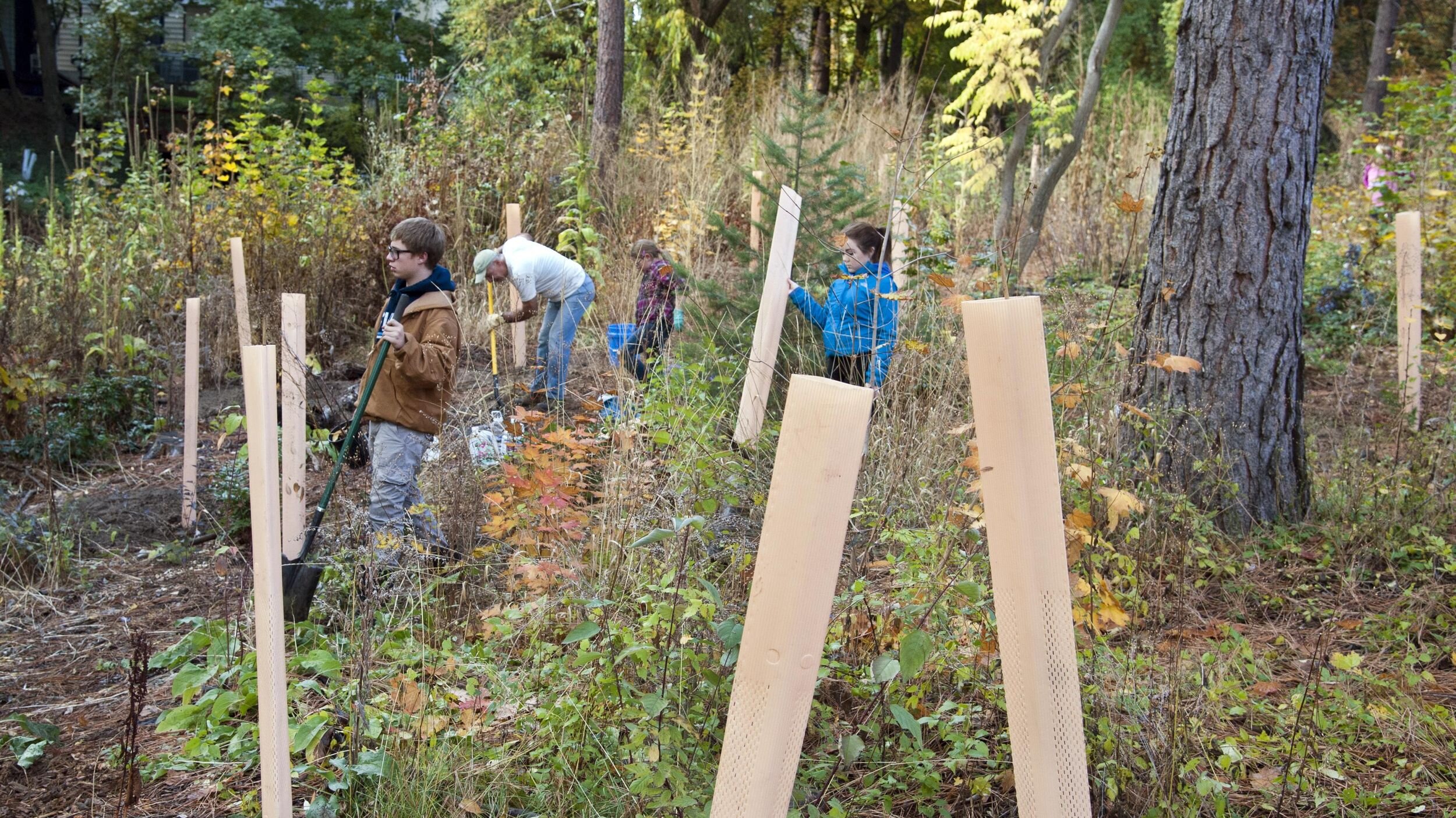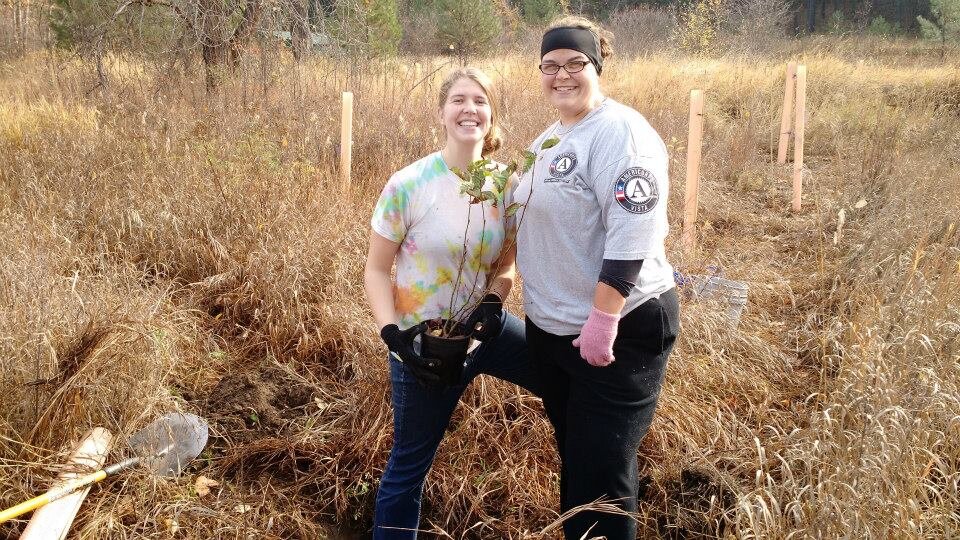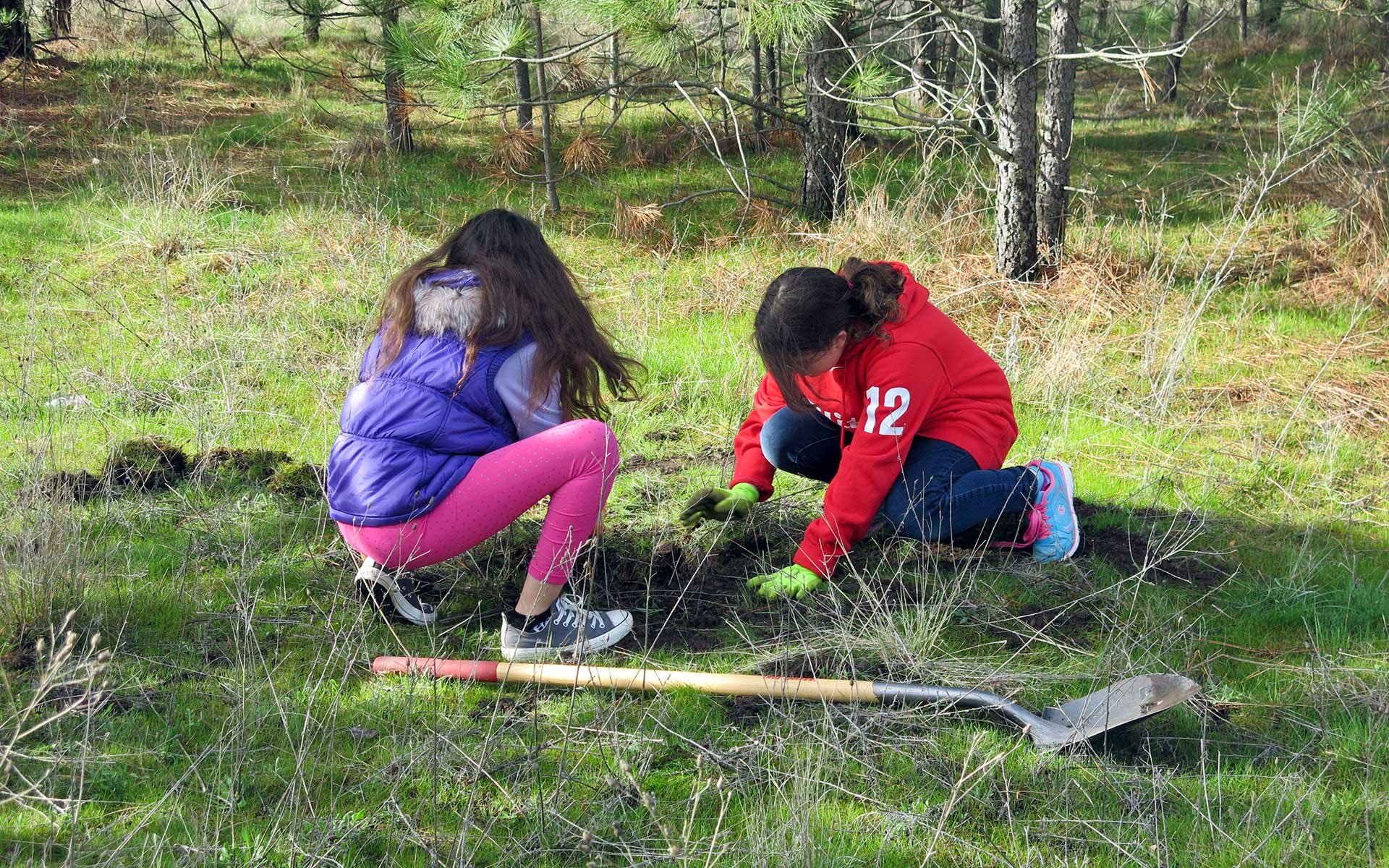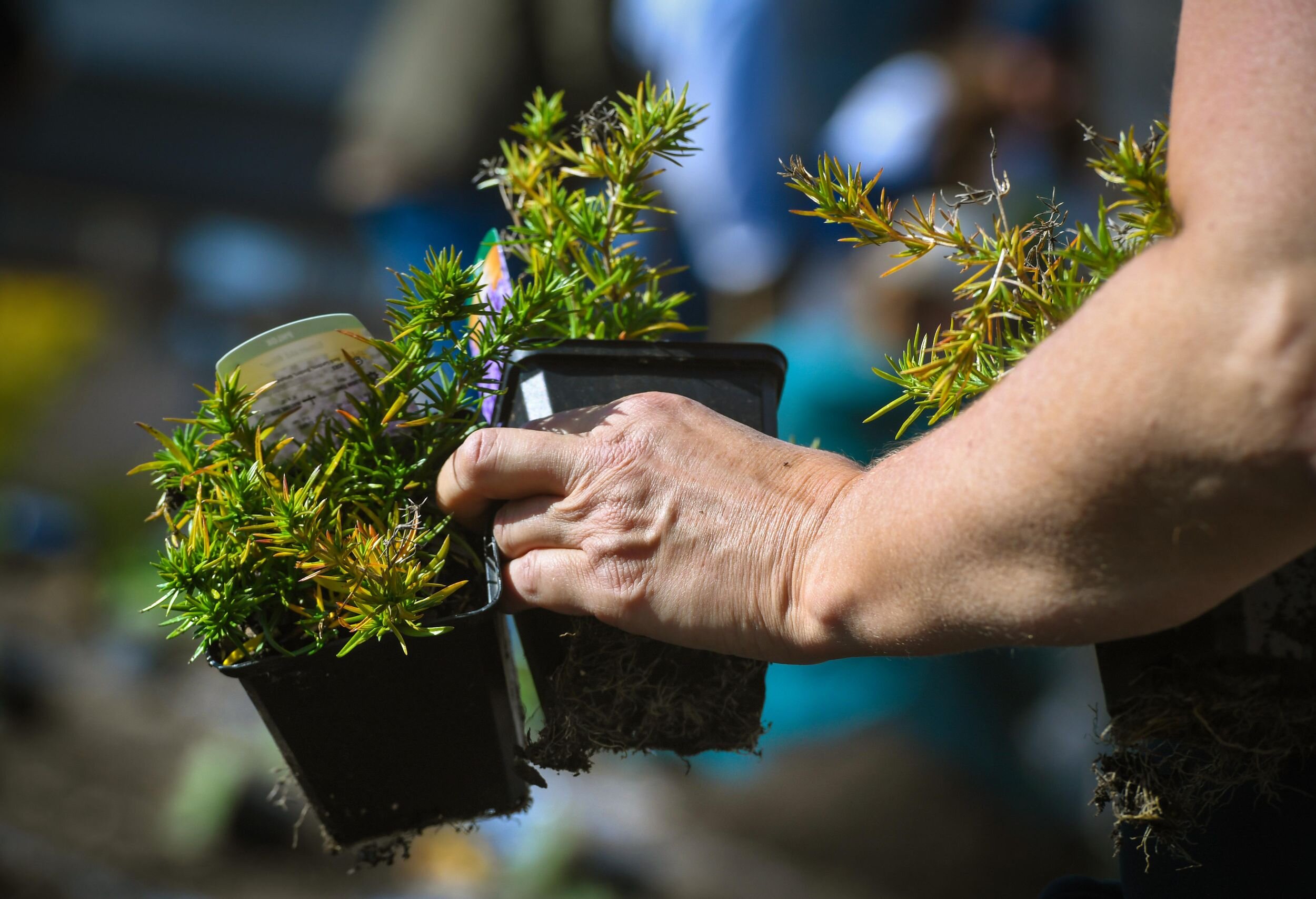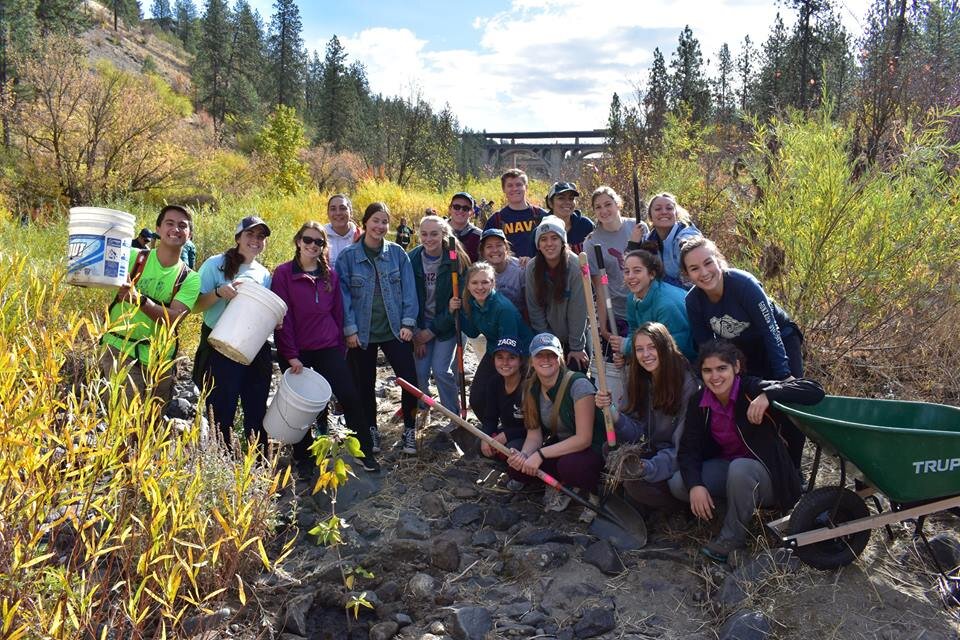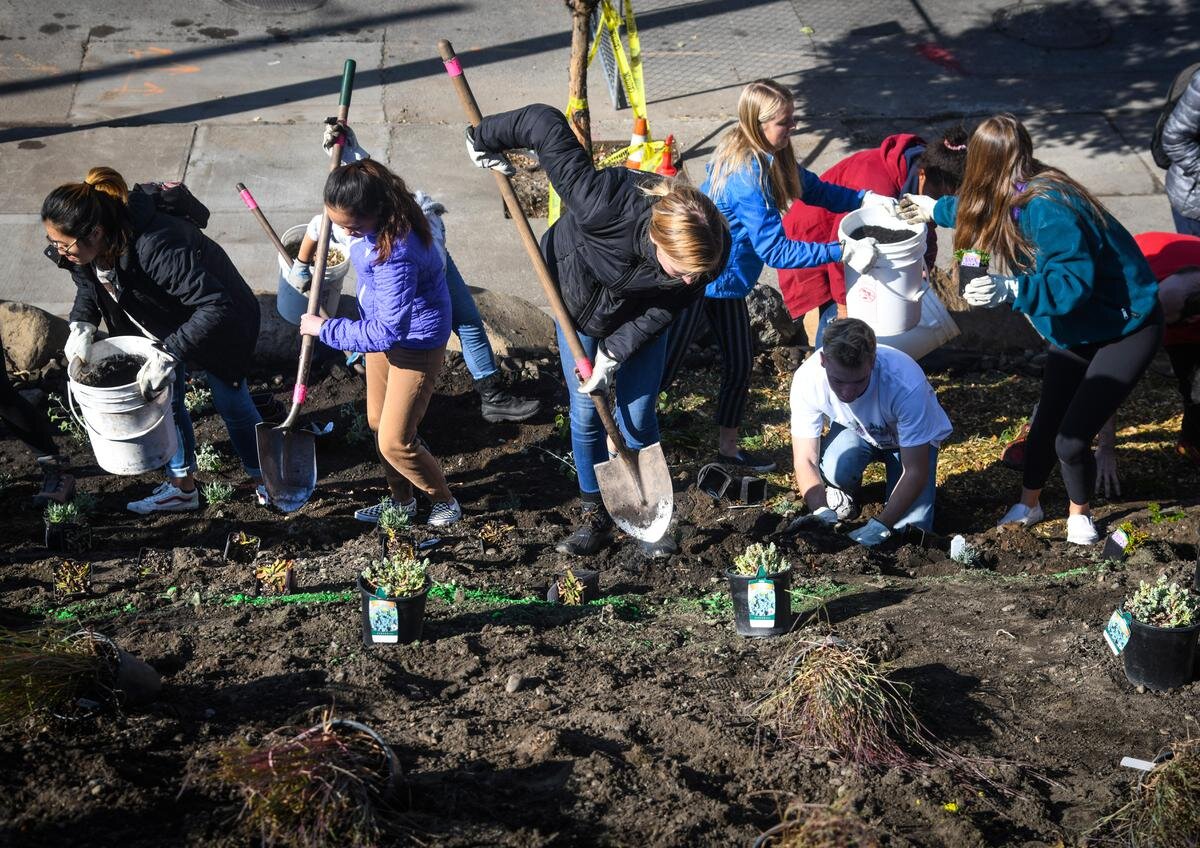Save the date for The Lands Council’s annual Reforest Spokane Day on Saturday, October 14th at Thompson Creek.
Please bring a water bottle, gloves, and a shovel - if you have one!
Why Thompson Creek?
Thompson Creek drains into the north end of Newman Lake. Over the past 30 years, deteriorating water quality in Newman Lake, as evidenced by high algae growth, has sparked community concern. Algae blooms—fueled by excess nutrient inputs (e.g. nitrogen and phosphorus)—reduce water clarity, increase oxygen demand (which can cause fish kills), degrade cold water habitat, and, if toxic blue-green algae is present, can pose a human health risk. We have installed beaver dam analogs (BDAs) to trap phosphorus-laden sediment and restrict its entry into Newman Lake. This will ultimately improve the water quality of the lake while creating a healthy, meandering stream system that reconnects with its floodplain, raises the water table, and enhances wildlife habitat.
Trees are critical to all aspects of life—our health, our economy, and our environment.
A healthy, adult tree can take 11,000 gallons of water from the soil and release it into the air again as oxygen and water vapor in a single growing season.
Native tree species support natural ecosystems by providing habitat and food for birds, mammals, and insects.
Tree planting improves water quality. A tree’s complex root network reduces runoff and erosion. This allows more recharging of the ground water supply. Wooded areas help prevent the transport of sediment and chemicals into streams.
Forested streamside buffers also filter sediment from streams, stabilize streambanks, shade and modify stream temperatures, sequester carbon to help mitigate greenhouse gas emissions, and reduce downstream flooding. And the presence of mature trees in a buffer makes the stream wider.






